
- Americans love good fiction. Despite a spate of high-profile books recently released that have questioned the existence of God and the validity of the Christian faith, most American adults believe that the stories they read in the Bible can be taken as literal truth, not merely as stories told to communicate life principles.
A new nationwide survey by The Barna Group explored a half dozen storiesdrawn from the Bible. The Barna researchers asked a sample of 1005 adults if they trusted those stories to be factually accurate or to be narratives that were not factually accurate but were designed to teach principles. A majority of adults indicated that they accepted five of the six stories - including the virgin birth of Jesus Christ - as being literally true, while half accepted the sixth story as an accurate depiction of an historical event.
The Virgin Birth
Three out of four adults (75%) said that they believe Jesus Christ was born to a virgin, Mary, as described in the gospel narratives. Of the six Bible stories examined in the survey, this story was the most widely accepted.
A majority of all but one of the sixty population subgroups studied in the research took the virgin birth at face value. The exception was atheists and agnostics (among whom just 15% said this really happened). Some people groups in which a majority rejected every other Bible tested broke that pattern in relation to the virgin birth. Mary’s immaculate conception was accepted as literally true by two-thirds of upscale adults (66%) and by a bare majority of the unchurched (53%). Even a strikingly large share of those who describe themselves as mostly liberal on political and social issues (60%) adopted the biblical view of Christ's birth.
Turning Water into Wine
Seven out of ten adults (69%) embraced the story of Jesus turning water into wine at the wedding in Cana as being literally true.
However, there were substantial differences across subgroups. Born again adults were nearly twice as likely as others to accept the story at face value (94% versus 49%). Churched adults were almost twice as likely as the unchurched to adopt this story (80% vs. 42%). Protestants were more likely than Catholics; blacks were more likely than whites or Hispanics; downscale individuals exceeded the likelihood of upscale people; and conservatives were more likely than liberals to see the story as literally accurate. Residents of the South were far more likely to embrace the story than were people in other regions of the country.
Feeding the Crowd
The Bible tells about Jesus using five loaves of bread and two fish to feed five thousand men, and then collecting 12 baskets full of leftovers. Two out of three people (68%) view that story as factually accurate.
The people groups most likely to accept this story as literal truth included born again Christians, Protestants, downscale adults, residents of the South, Republicans, conservatives, and churched people. Atheists/agnostics, liberals, upscale people and the unchurched stood out as especially resistant to this story.
The Flood
Most Americans (64%) have no trouble believing that the planet-altering flood actually happened, in which Noah, his family and numerous animals were spared by building and then living on a giant boat for several months.
Not everyone had an easy time adopting this story as accurate. Half or fewer of several groups bought into Noah's adventure: Catholics, atheists/agnostics, residents of the Northeast, upscale adults, the unchurched, and liberals.
Eve and the Serpent
In total, 56% of adults believe that the story of the devil, disguised as a serpent and tempting Eve to sin by eating the forbidden fruit, is literally true.
More than four out of every five born again adults embraced this story, compared to less than half as many among the non-born again. While Protestants were significantly more likely than Catholics to accept this story as literal truth, only a minority of the upscale (39%), the unchurched (32%), political liberals (35%) and people in the Northeast (46%) shared that confidence. Only 8% of atheists and agnostics accept the story.
The Strength of Samson
The Bible tells of Samson, one of the judges of ancient Israel, losing his legendary strength when Delilah seduced him into revealing that his hair was the source of that strength and that he lost his strength when she had his hair cut. Only half of the population (49%) accepts that story as completely accurate.
Born again Christians (72%) were among the most prolific defenders of that story. Joining them were people who attend Protestant churches that are not associated with mainline denominations (71%) and African Americans (70%). This was also the only Bible story tested in which gender affected perspectives: females were more likely than males to accept this story as accurate.
General Patterns Observed
There were a number of consistent response patterns revealed in the research. Those patterns included the following:
Born again Christians were far more likely than non-born again adults to accept each of the six narratives as fully accurate. On average the difference between the two groups was forty percentage points! In relation to four of the six stories tested, the born again group was twice as likely as their counterparts to view the story in question as literal truth.
Protestants were more likely than Catholics to accept each of the six stories as literally true. Catholics especially struggled to put their faith in the Old Testament stories. Examining a dozen Bible evaluated in this manner by The Barna Group in surveys in October and December, about half of all Catholics trusted the Old Testament stories evaluated, compared to about three-quarters believing the New Testament stories. Meanwhile, among Protestants, in relation to all six of the scriptural narratives, those who attend mainline churches were significantly less likely than those attending other Protestant congregations to say that they trusted the stories as told.
People who live in the South were more likely than residents of all other regions to embrace the truth of all six stories.
Downscale individuals were substantially more likely than upscale people to characterize each of the six stories as factually reliable.
Those who portrayed themselves as mostly conservative on political matters were substantially more likely than those who called themselves mostly liberal to consider each of the six stories to be literally true. The average difference between the two segments was 26 percentage points.
A new nationwide survey by The Barna Group explored a half dozen storiesdrawn from the Bible. The Barna researchers asked a sample of 1005 adults if they trusted those stories to be factually accurate or to be narratives that were not factually accurate but were designed to teach principles. A majority of adults indicated that they accepted five of the six stories - including the virgin birth of Jesus Christ - as being literally true, while half accepted the sixth story as an accurate depiction of an historical event.
The Virgin Birth
Three out of four adults (75%) said that they believe Jesus Christ was born to a virgin, Mary, as described in the gospel narratives. Of the six Bible stories examined in the survey, this story was the most widely accepted.
A majority of all but one of the sixty population subgroups studied in the research took the virgin birth at face value. The exception was atheists and agnostics (among whom just 15% said this really happened). Some people groups in which a majority rejected every other Bible tested broke that pattern in relation to the virgin birth. Mary’s immaculate conception was accepted as literally true by two-thirds of upscale adults (66%) and by a bare majority of the unchurched (53%). Even a strikingly large share of those who describe themselves as mostly liberal on political and social issues (60%) adopted the biblical view of Christ's birth.
Turning Water into Wine
Seven out of ten adults (69%) embraced the story of Jesus turning water into wine at the wedding in Cana as being literally true.
However, there were substantial differences across subgroups. Born again adults were nearly twice as likely as others to accept the story at face value (94% versus 49%). Churched adults were almost twice as likely as the unchurched to adopt this story (80% vs. 42%). Protestants were more likely than Catholics; blacks were more likely than whites or Hispanics; downscale individuals exceeded the likelihood of upscale people; and conservatives were more likely than liberals to see the story as literally accurate. Residents of the South were far more likely to embrace the story than were people in other regions of the country.
Feeding the Crowd
The Bible tells about Jesus using five loaves of bread and two fish to feed five thousand men, and then collecting 12 baskets full of leftovers. Two out of three people (68%) view that story as factually accurate.
The people groups most likely to accept this story as literal truth included born again Christians, Protestants, downscale adults, residents of the South, Republicans, conservatives, and churched people. Atheists/agnostics, liberals, upscale people and the unchurched stood out as especially resistant to this story.
The Flood
Most Americans (64%) have no trouble believing that the planet-altering flood actually happened, in which Noah, his family and numerous animals were spared by building and then living on a giant boat for several months.
Not everyone had an easy time adopting this story as accurate. Half or fewer of several groups bought into Noah's adventure: Catholics, atheists/agnostics, residents of the Northeast, upscale adults, the unchurched, and liberals.
Eve and the Serpent
In total, 56% of adults believe that the story of the devil, disguised as a serpent and tempting Eve to sin by eating the forbidden fruit, is literally true.
More than four out of every five born again adults embraced this story, compared to less than half as many among the non-born again. While Protestants were significantly more likely than Catholics to accept this story as literal truth, only a minority of the upscale (39%), the unchurched (32%), political liberals (35%) and people in the Northeast (46%) shared that confidence. Only 8% of atheists and agnostics accept the story.
The Strength of Samson
The Bible tells of Samson, one of the judges of ancient Israel, losing his legendary strength when Delilah seduced him into revealing that his hair was the source of that strength and that he lost his strength when she had his hair cut. Only half of the population (49%) accepts that story as completely accurate.
Born again Christians (72%) were among the most prolific defenders of that story. Joining them were people who attend Protestant churches that are not associated with mainline denominations (71%) and African Americans (70%). This was also the only Bible story tested in which gender affected perspectives: females were more likely than males to accept this story as accurate.
General Patterns Observed
There were a number of consistent response patterns revealed in the research. Those patterns included the following:
Born again Christians were far more likely than non-born again adults to accept each of the six narratives as fully accurate. On average the difference between the two groups was forty percentage points! In relation to four of the six stories tested, the born again group was twice as likely as their counterparts to view the story in question as literal truth.
Protestants were more likely than Catholics to accept each of the six stories as literally true. Catholics especially struggled to put their faith in the Old Testament stories. Examining a dozen Bible evaluated in this manner by The Barna Group in surveys in October and December, about half of all Catholics trusted the Old Testament stories evaluated, compared to about three-quarters believing the New Testament stories. Meanwhile, among Protestants, in relation to all six of the scriptural narratives, those who attend mainline churches were significantly less likely than those attending other Protestant congregations to say that they trusted the stories as told.
People who live in the South were more likely than residents of all other regions to embrace the truth of all six stories.
Downscale individuals were substantially more likely than upscale people to characterize each of the six stories as factually reliable.
Those who portrayed themselves as mostly conservative on political matters were substantially more likely than those who called themselves mostly liberal to consider each of the six stories to be literally true. The average difference between the two segments was 26 percentage points.
General Patterns Observed
There were a number of consistent response patterns revealed in the research. Those patterns included the following:
Born again Christians were far more likely than non-born again adults to accept each of the six narratives as fully accurate. On average the difference between the two groups was forty percentage points! In relation to four of the six stories tested, the born again group was twice as likely as their counterparts to view the story in question as literal truth.
Protestants were more likely than Catholics to accept each of the six stories as literally true. Catholics especially struggled to put their faith in the Old Testament stories. Examining a dozen Bible evaluated in this manner by The Barna Group in surveys in October and December, about half of all Catholics trusted the Old Testament stories evaluated, compared to about three-quarters believing the New Testament stories. Meanwhile, among Protestants, in relation to all six of the scriptural narratives, those who attend mainline churches were significantly less likely than those attending other Protestant congregations to say that they trusted the stories as told.
People who live in the South were more likely than residents of all other regions to embrace the truth of all six stories.
Downscale individuals were substantially more likely than upscale people to characterize each of the six stories as factually reliable.
Those who portrayed themselves as mostly conservative on political matters were substantially more likely than those who called themselves mostly liberal to consider each of the six stories to be literally true. The average difference between the two segments was 26 percentage points.
To see how adults responded to the six other Bible stories tested in a recent survey, click here.
Reflections on the Data
Upon analyzing the findings, researcher and author George Barna noted that the outcomes helped to better understand the place of Christian belief in American society.
"Americans are clearly knowledgeable about many of the key Old Testament stories, but they are also more comfortable accepting the stories drawn from the life of Jesus and the New Testament," Barna explained. "Many people seem to divide the Bible into two separate and unequal portions: the Old Testament, with what they perceive to be allegorical stories, and the New Testament, with what they believe to be factual history."
But as Christmas nears, Barna also pointed out that the large majority who believe in the virgin birth coincides with the fact that few Americans are offended by public displays that remind people of the meaning of Christmas and the importance of the celebration. Quite the contrary, he stated, "Christmas is one of the few components of the Christian faith that even nominal Christians - who exceed 40 million adults - appreciate. Although that group, in particular, is not spiritually inclined, the joy and deeper meaning introduced by celebrating the birth of Christ resonates with them at the same time that the season strikes a more profound spiritual chord with committed Christians."
About the Research
This report is based upon a nationwide telephone survey conducted by The Barna Group in December 2007 among a random sample of 1005 adults, age 18 and older. The maximum margin of sampling error associated with the aggregate sample is ±3.2 percentage points at the 95% confidence level. Statistical weighting was used to calibrate the sample to known population percentages in relation to demographic variables.
There were a number of consistent response patterns revealed in the research. Those patterns included the following:
Born again Christians were far more likely than non-born again adults to accept each of the six narratives as fully accurate. On average the difference between the two groups was forty percentage points! In relation to four of the six stories tested, the born again group was twice as likely as their counterparts to view the story in question as literal truth.
Protestants were more likely than Catholics to accept each of the six stories as literally true. Catholics especially struggled to put their faith in the Old Testament stories. Examining a dozen Bible evaluated in this manner by The Barna Group in surveys in October and December, about half of all Catholics trusted the Old Testament stories evaluated, compared to about three-quarters believing the New Testament stories. Meanwhile, among Protestants, in relation to all six of the scriptural narratives, those who attend mainline churches were significantly less likely than those attending other Protestant congregations to say that they trusted the stories as told.
People who live in the South were more likely than residents of all other regions to embrace the truth of all six stories.
Downscale individuals were substantially more likely than upscale people to characterize each of the six stories as factually reliable.
Those who portrayed themselves as mostly conservative on political matters were substantially more likely than those who called themselves mostly liberal to consider each of the six stories to be literally true. The average difference between the two segments was 26 percentage points.
To see how adults responded to the six other Bible stories tested in a recent survey, click here.
Reflections on the Data
Upon analyzing the findings, researcher and author George Barna noted that the outcomes helped to better understand the place of Christian belief in American society.
"Americans are clearly knowledgeable about many of the key Old Testament stories, but they are also more comfortable accepting the stories drawn from the life of Jesus and the New Testament," Barna explained. "Many people seem to divide the Bible into two separate and unequal portions: the Old Testament, with what they perceive to be allegorical stories, and the New Testament, with what they believe to be factual history."
But as Christmas nears, Barna also pointed out that the large majority who believe in the virgin birth coincides with the fact that few Americans are offended by public displays that remind people of the meaning of Christmas and the importance of the celebration. Quite the contrary, he stated, "Christmas is one of the few components of the Christian faith that even nominal Christians - who exceed 40 million adults - appreciate. Although that group, in particular, is not spiritually inclined, the joy and deeper meaning introduced by celebrating the birth of Christ resonates with them at the same time that the season strikes a more profound spiritual chord with committed Christians."
About the Research
This report is based upon a nationwide telephone survey conducted by The Barna Group in December 2007 among a random sample of 1005 adults, age 18 and older. The maximum margin of sampling error associated with the aggregate sample is ±3.2 percentage points at the 95% confidence level. Statistical weighting was used to calibrate the sample to known population percentages in relation to demographic variables.
spanish:
Americanos amor buena ficción. A pesar de una serie de libros de alto perfil que se han publicado recientemente en tela de juicio la existencia de Dios y la validez de la fe cristiana, la gran mayoría de los adultos creen que las historias que leen en la Biblia puede ser tomada como verdad literal, y no simplemente como historias contadas a Comunicar la vida principios. Una nueva encuesta nacional por el Grupo Barna explorado una media docena de historias Extraídas de la Biblia. El Barna investigadores pidieron una muestra de 1005 adultos de confianza si esas historias que se los hechos o que se precisa que la descripción de los hechos no eran exactos, pero fueron diseñados para enseñar principios. La mayoría de los adultos indicó que aceptó cinco de las seis historias, incluida la virgen del nacimiento de Jesucristo, como están literalmente verdadera, mientras que la mitad aceptó la sexta historia como una descripción exacta de un evento histórico. La Virgen nacimiento Tres de cada cuatro adultos (75%) dicen que creen que Jesús Cristo nació de una virgen, María, tal como se describe en el evangelio narraciones. De las seis historias de la Biblia examinado en la encuesta, esta historia es la más ampliamente aceptada. La mayoría de todos menos uno de los sesenta subgrupos de población estudiados en la investigación ocupa la virgen nacimiento al pie de la letra. La excepción fue agnósticos y ateos (entre los cuales sólo 15% dijo esto realmente sucedió). Algunos grupos de personas en el que la mayoría rechaza todos los demás Biblia probado que rompió el patrón en relación con el nacimiento virgen. Mary's inmaculada concepción fue aceptado como verdaderas literalmente por dos tercios de alta categoría de los adultos (66%) y por un simple mayoría de los unchurched (53%). Incluso un sorprendentemente gran parte de quienes describen a sí mismos como liberales en la mayoría de las cuestiones políticas y sociales (60%) aprobó el punto de vista bíblico del nacimiento de Cristo. En cuanto el agua en vino Siete de cada diez adultos (69%), aceptada de la historia de Jesús convirtiendo el agua en vino en la boda en Caná de ser literalmente verdaderas. Sin embargo, hay grandes diferencias entre los subgrupos. Nacido de nuevo adultos son casi el doble de posibilidades que los otros a aceptar la historia al pie de la letra (94% frente a 49%). Churched adultos son casi dos veces más probabilidades que los unchurched a adoptar esta historia (80% vs 42%). Los protestantes eran más probabilidades que los católicos, los negros tenían más probabilidades que los blancos o los hispanos; regresión personas superado el riesgo de alta categoría de personas, y los conservadores tenían más posibilidades de los liberales para ver la historia como literalmente exacta. Los residentes del Sur son mucho más propensos a abrazar la historia que eran personas de otras regiones del país. Alimentación de la Multitud La Biblia habla de Jesús usando cinco panes y dos peces para alimentar a cinco mil hombres, y, a continuación, recoger 12 cestas llenas de restos. Dos de cada tres personas (68%) opina que los hechos como historia exacta. Los grupos de personas con más probabilidades de aceptar esta historia como verdad literal incluidos los cristianos nacidos de nuevo, los protestantes, los adultos regresión, los residentes del Sur, los republicanos, los conservadores, y churched personas. Los ateos / agnósticos, liberales, gente alta categoría de la unchurched actual y destaca como especialmente resistente a esta historia. El Diluvio La mayoría de los estadounidenses (64%) no tienen problemas para creer que el planeta - la alteración de las inundaciones que sucedió realmente, en el que Noé, su familia y numerosos animales se salvan de la construcción y, a continuación, vivir en un barco gigante durante varios meses. No todo el mundo tiene fácil a la hora de la adopción de esta historia lo más exacta. La mitad o menos de varios grupos de compra en Noah's aventura: los católicos, los ateos / agnósticos, los residentes del Nordeste, alta categoría de adultos, la unchurched, y liberales.
Eva y la Serpiente
En total, 56% de los adultos creen que la historia del diablo, disfrazado como una serpiente y la tentación de Eva por el pecado de comer el fruto prohibido, es literalmente la verdad. Más de cuatro de cada cinco adultos nacidos de nuevo abrazado esta historia, en comparación con menos de la mitad de los no nacidos de nuevo. Si bien los protestantes fueron significativamente más probabilidades que los católicos a aceptar esta historia como verdad literal, sólo una minoría de la alta categoría (39%), la unchurched (32%), políticas liberales (35%) y las personas en el noreste (46%) comparte Que la confianza. Sólo 8% de los ateos y agnósticos aceptar la historia. La fuerza de Sansón La Biblia habla de Sansón, uno de los jueces del antiguo Israel, perdiendo su legendaria fuerza cuando Delilah seducido él para que revele que su pelo era la fuente de esa fuerza y que perdió su fuerza cuando ella tenía el cabello cortado. Sólo la mitad de la población (49%) acepta que la historia como completamente exacta. Nacido de nuevo los cristianos (72%) se encontraban entre los más prolíficos de los defensores de esa historia. Participar ellos eran personas que asisten a las iglesias protestantes que no están asociadas a las principales denominaciones (71%) y los afroamericanos (70%). Esta fue también la única historia bíblica a prueba en la que las perspectivas de género afectadas: las mujeres tenían más probabilidades que los hombres a aceptar esta historia tan exacto. Los patrones generales observados Hay una serie de patrones de respuesta coherente puesto de manifiesto en la investigación. Esas pautas fueron las siguientes: Los cristianos nacidos de nuevo son mucho más propensos que los no nacidos de nuevo los adultos a aceptar cada una de las seis descripciones precisas de la manera más completa. En promedio, la diferencia entre los dos grupos fueron los cuarenta puntos porcentuales! En relación con cuatro de las seis historias a prueba, el grupo nacido de nuevo fue el doble de probabilidades que sus homólogos para ver la historia de que se trata como verdad literal. Los protestantes eran más probabilidades que los católicos a aceptar cada una de las seis historias como verdaderas literalmente. Especialmente los católicos lucharon para poner su fe en el Antiguo Testamento historias. El examen de una docena de Biblia evaluados de esta manera por el Grupo Barna en los estudios en octubre y diciembre, alrededor de la mitad de todos los católicos confía en el Antiguo Testamento historias evaluadas, en comparación con alrededor de tres cuartas partes creer el Nuevo Testamento historias. Mientras tanto, entre los protestantes, en relación con los seis de la narración bíblica, a los que asisten a las principales iglesias fueron significativamente menos probable que los que asisten a otras congregaciones protestantes a decir que confía en que las historias como le dijo. Las personas que viven en el Sur era más probable que los residentes de todas las demás regiones a abrazar la verdad de los seis cuentos. Regresión personas fueron considerablemente más probabilidades que las personas de alta categoría de caracterizar cada una de las seis historias de los hechos como fiable. Los que retrató a sí mismos como la mayoría conservadora en asuntos políticos fueron sustancialmente más probable que los que llamaban a sí mismos liberales principalmente para examinar cada una de las seis historias para ser literalmente verdaderas. La diferencia media entre los dos sectores fue 26 puntos porcentuales.



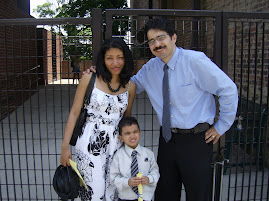
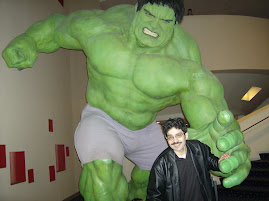
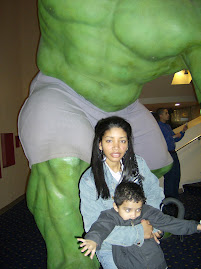
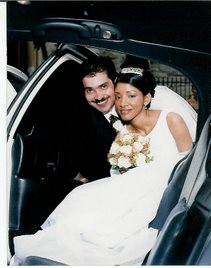


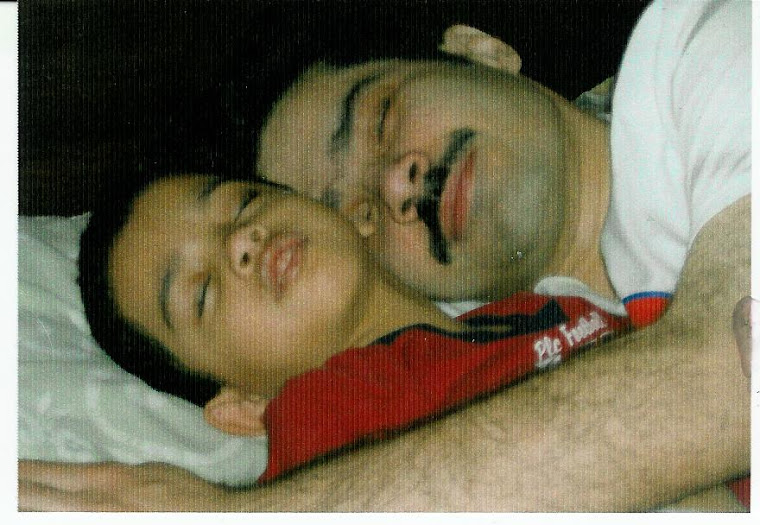
No comments:
Post a Comment